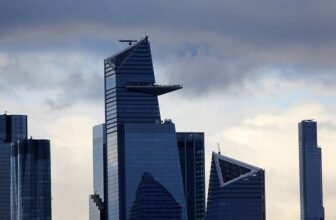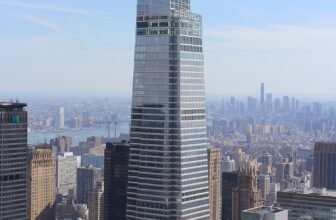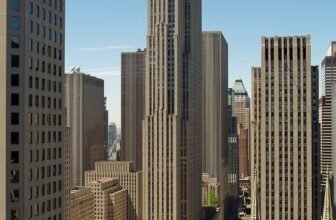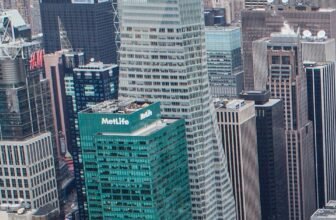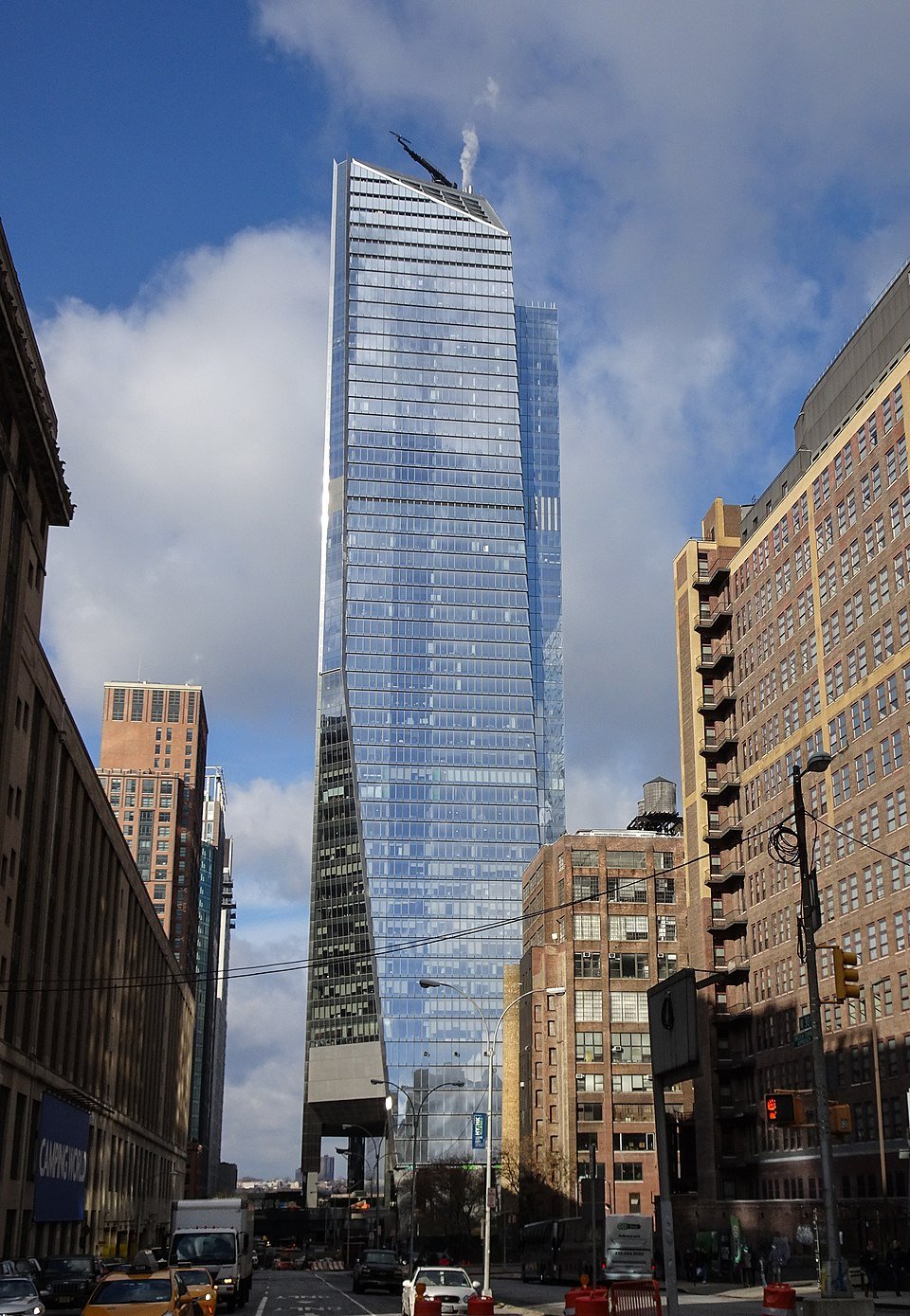
Why Is Hudson Yards Famous?
New York City is no stranger to reinvention. From the immigrant-driven boom of the Lower East Side in the 19th century to the sleek glass towers rising in Long Island City and Downtown Brooklyn, the skyline has never been static. But even in a city that never stops building upward, few developments have captured global attention quite like Hudson Yards. And at the heart of this mega-development lies a shimmering, modernist anchor: 10 Hudson Yards.
The Birth of a New Manhattan
Before we delve into the steel and glass monolith that is 10 Hudson Yards, it’s essential to understand the context that gave it life. Until just a decade ago, the far West Side of Manhattan, particularly above 30th Street and west of 10th Avenue, was largely industrial , a no-man’s-land of rail yards, aging warehouses, and untapped potential.
Enter Hudson Yards, a $25 billion mega-development , the largest private real estate project in U.S. history. A city within a city, Hudson Yards was designed to bring together ultra-modern office spaces, luxury residences, high-end retail, public art, and transportation. Its development would transform the last frontier of Manhattan into a glittering, high-tech hub.
And 10 Hudson Yards, completed in 2016, would be the first tower to rise from this ambitious vision, pioneering what would soon become a skyline-defining district.
There are many reasons Hudson Yards is famous:
-
Engineering Feat: Built atop the working West Side Rail Yard, Hudson Yards required a platform that essentially floats the entire complex over dozens of active train tracks. This required some of the most advanced engineering in urban history.
-
Architectural Innovation: With a roster of world-renowned architects like Kohn Pedersen Fox, Diller Scofidio + Renfro, and Thomas Heatherwick (of Vessel fame), the design pedigree of Hudson Yards is unmatched.
-
Largest Private Real Estate Development: Bigger than Rockefeller Center was in its day, Hudson Yards is a city-transforming force in itself.
-
Cultural & Retail Hub: From The Shed, a futuristic art venue, to luxury shopping at The Shops & Restaurants at Hudson Yards, it has become a go-to destination for both locals and tourists.
-
Tech & Finance Magnet: Hudson Yards has become a new epicenter for companies in media, tech, fashion, and finance, industries shaping the global economy.
What Is 10 Hudson Yards?
10 Hudson Yards is not merely the first office tower in the development, it’s the cornerstone. Rising 895 feet (273 meters) into the Manhattan sky, it comprises 52 floors and approximately 1.8 million square feet of LEED Platinum-certified commercial space.
Designed by Kohn Pedersen Fox Associates (KPF), 10 Hudson Yards is sleek and efficient. Its design features a stepped facade, large floor-to-ceiling windows, and direct access to the High Line, integrating the new with the old in a uniquely New York way. The building has set a benchmark in energy efficiency and sustainability for modern office construction.
Who Owns 10 Hudson Yards?
Ownership of 10 Hudson Yards reflects the high stakes and high finance behind the development. The tower was originally developed by Related Companies and Oxford Properties Group, the two powerhouse firms behind the entire Hudson Yards project.
In 2016, shortly after its completion, a majority stake in 10 Hudson Yards was sold to Allianz, a German financial services and insurance giant, in a deal valued at over $2 billion. However, Related and Oxford retained minority interests and continue to manage the property.
So while the tower is physically in New York, its ownership extends globally , a fitting metaphor for Manhattan’s role in the world economy.
What Companies Are in 10 Hudson Yards?
As the first tower completed in the Hudson Yards development, 10 Hudson Yards attracted some of the most prestigious tenants in the world. Its tenants reflect the building’s fusion of innovation, luxury, and power.
1. L’Oréal USA
The French beauty conglomerate relocated its U.S. headquarters to 10 Hudson Yards, occupying around 400,000 square feet across several floors. The company’s sleek office design mirrors the cutting-edge aesthetics of the building.
2. Coach (now Tapestry Inc.)
Coach, now under the Tapestry umbrella (which also includes Kate Spade and Stuart Weitzman), is another marquee tenant. They moved their global headquarters into the building, marking a major shift for the iconic American fashion brand.
3. SAP
The German software giant SAP took up over 100,000 square feet of office space in the building, underscoring the project’s appeal to major tech firms.
4. Boston Consulting Group (BCG)
One of the world’s most prestigious management consulting firms, BCG made headlines when it relocated its headquarters to 10 Hudson Yards. The firm’s dynamic, collaborative office design has become a model for modern workspaces.
5. VaynerMedia
Founded by social media magnate Gary Vaynerchuk, VaynerMedia represents the next generation of media firms that have made 10 Hudson Yards their creative playground.
These are just a few of the major players. The tenant list reads like a Who’s Who of global commerce , a sign of the tower’s premium appeal.
Who Is the Billionaire in Hudson Yards?
While many billionaires live or work in or near Hudson Yards, the name most synonymous with the development is Stephen Ross, the chairman and founder of Related Companies. Ross is the billionaire mastermind behind the entire Hudson Yards vision.
A real estate mogul and philanthropist, Ross has not only shaped parts of Manhattan’s skyline but has also invested heavily in culture and sports (he owns the Miami Dolphins). His vision for Hudson Yards was about more than real estate, it was about creating a holistic, futuristic neighborhood from the ground up.
Other billionaires also own property in the ultra-luxury residences of Hudson Yards, especially at 15 Hudson Yards and 35 Hudson Yards, where penthouses can fetch tens of millions of dollars.
Can You Live at Hudson Yards?
Absolutely , but it comes at a price.
Hudson Yards is not just a commercial hub. It includes several residential towers offering some of the most luxurious living spaces in New York City.
1. 15 Hudson Yards
This tower offers sweeping views of the Hudson River and Downtown Manhattan. It includes luxury condos and amenities like pools, fitness centers, yoga studios, screening rooms, and even a private dining suite.
2. 35 Hudson Yards
Designed by David Childs of Skidmore, Owings & Merrill, this building features high-end condos above the Equinox Hotel and flagship Equinox Fitness Club. Residents can access spa services, private terraces, and 24-hour concierge services.
3. Abington House & One Hudson Yards
For renters, Related also developed these luxury rental buildings just outside the core development. Though slightly more affordable than the condos, these are still high-end properties with amenities galore.
Living at Hudson Yards offers a futuristic, all-in-one lifestyle , shopping, dining, fitness, and entertainment all within steps of home.
How Much Did It Cost to Build Hudson Yards?
The entire Hudson Yards development is often cited as the most expensive private real estate development in American history, with an estimated price tag exceeding $25 billion.
To break it down:
-
10 Hudson Yards alone cost over $2 billion to develop.
-
The entire Eastern Yard (including The Vessel, The Shops, and several towers) ran around $20 billion.
-
The Western Yard (still in development) will push the total even higher.
This colossal cost reflects not just the price of real estate and materials, but also the complex engineering challenges , especially building over an active rail yard. The project required:
-
Massive steel platforms,
-
Ventilation for the trains beneath,
-
Load-distribution systems to support skyscrapers,
-
And integration with public infrastructure like the new 7-train subway extension.
The Future of 10 Hudson Yards and Beyond
10 Hudson Yards was the first domino to fall , a harbinger of change for the West Side. But the story of Hudson Yards is far from over.
With further development on the Western Yard underway, and the future of urban living in flux post-pandemic, the entire complex continues to evolve. Plans for more residential units, green space, and tech-driven public spaces are constantly in the works.
10 Hudson Yards, though, remains iconic , the pioneer that turned a railyard into Manhattan’s newest skyline.
A New York Legacy in the Making
From the outside, 10 Hudson Yards might appear as just another glass-and-steel tower. But within its walls and foundation is a story of ambition, investment, innovation, and vision on an unparalleled scale.
It’s not just a building; it’s the symbol of a new Manhattan , one where tech, fashion, finance, and art collide in vertical harmony. Where rail yards become sky gardens. Where billionaires share elevators with software engineers and creative directors.
And while Hudson Yards has not been without its critics , some argue it’s too corporate, too sterile, too insulated , few can deny the sheer scale and boldness of the vision. Love it or not, Hudson Yards, and 10 Hudson Yards in particular, have already secured their place in the story of New York.

